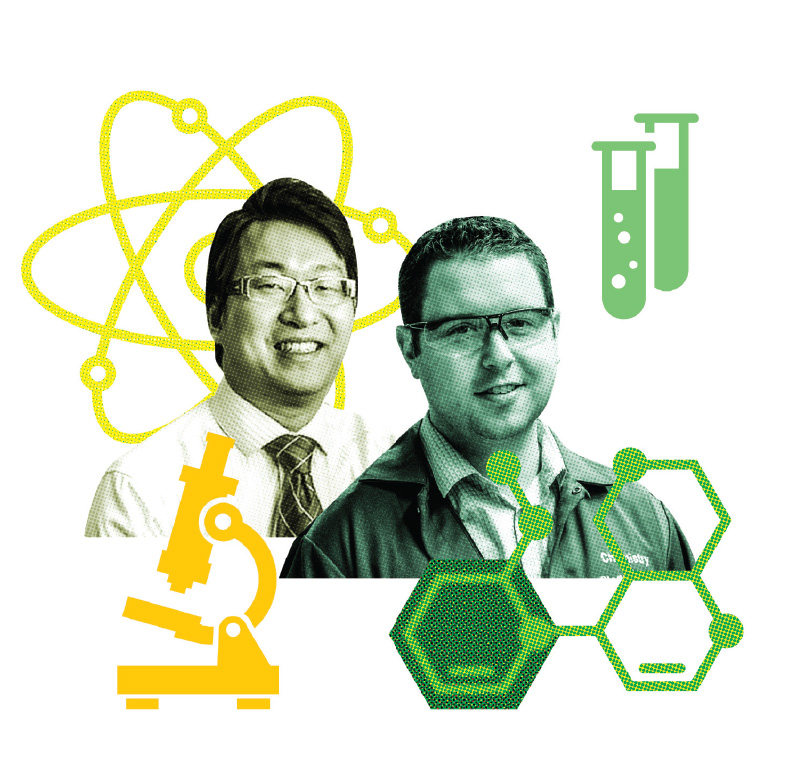NSF CAREER Awards For Two Professors
Two Baylor professors in the College of Arts and Sciences received 2018 Faculty Early Career Development Program grants from the National Science Foundation (NSF) this spring.
Known as CAREER awards, the grants are prestigious awards made by the NSF and are given in support of early career researchers who, according to the program’s website, “have the potential to serve as academic role models in research and education and to lead advances in the mission of their department or organization.”
Dr. Caleb D. Martin, assistant professor of chemistry, and Dr. Howard Lee, assistant professor of physics, each received five-year grants. Both professors also are in the Baylor Rising Stars program, which gives selected early career faculty members an intensive mentorship experience that helps put them on the fast track toward an independent, externally funded research program. [Visit baylor.edu/research for information about the Rising Star program.]
Martin’s grant, funded through the NSF’s Chemical Synthesis Program, is in support of his research into synthesizing analogues of benzene containing boron.
This class of materials is considered to have the potential to improve the durability and performance of organic photovoltaic (OPV) solar cells and organic light emitting diodes (OLEDs) used in devices, such as smart phones, TVs and tablets. Conventional inorganic systems are rigid and brittle while their organic counterparts, OLEDs and OPVs, can be made flexible.
Among the numerous possible applications, Martin sees his work as having the potential to help bring electrical power to millions of people living in remote or underdeveloped regions.
Lee’s award is for developing ultra-thin, nanoscale optical films with electrically tunable properties. The films, called metasurfaces, are only a few hundred atoms thick but have the potential to dramatically reduce the size and weight of a vast range of optical and electro-optical devices while also improving performance.
In one form, the ultrathin metasurfaces serve as “perfect absorbers” because they can absorb 100 percent of the light that falls on them. That property alone could significantly improve efficiency of optical devices that require strong light absorption, such as photovoltaic solar cells.
In two other variants under development, the films might discretely filter out specific colors—wavelengths of light—in the visible and invisible regions of the electromagnetic spectrum, or they could be used to steer beams of light with exacting precision, all by varying the electrical voltage applied to the film. Lee is working to develop prototype to show functionalities.
Last year, Lee received a Young Faculty Award from the Defense Advanced Research Projects Agency (DARPA) for related nanophotonic work in nonlinear-optical regime.
NSF CAREER awards carry a rigorous educational outreach mandate for recipients.
Martin and the Martin Research Group, which he founded and leads, will continue their work with The Cove, a local nonprofit agency that serves area students who are homeless and comprised primarily of minority populations, all groups that are generally underrepresented in the STEM fields. He said it is beneficial for youth they visit to see a professor along with others who are at various ages and stages in their education.
This summer at his lab, Lee will host electro-optics students from Texas State Technical College at Waco to give them additional experience in nano-technology. He also will participate in Mayborn Museum’s Portal to the Public Network [Baylor Magazine, “Making Research Accessible,” Fall 2017] designed to stimulate interest among the general public in current research and innovation, and he will give an introductory lecture on nano-optics and potential applications at one of the museum’s Science Thursdays events.
